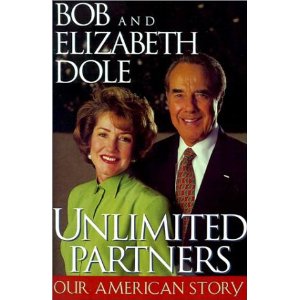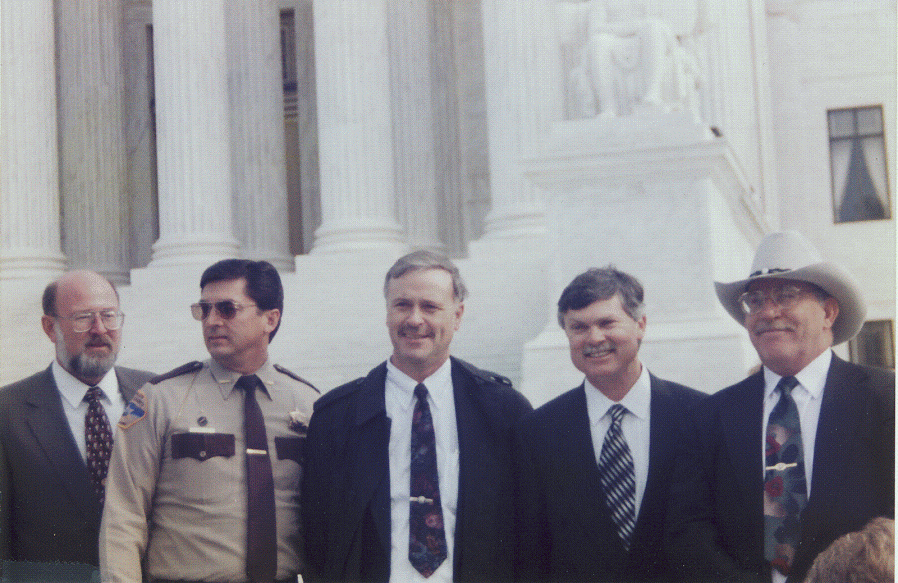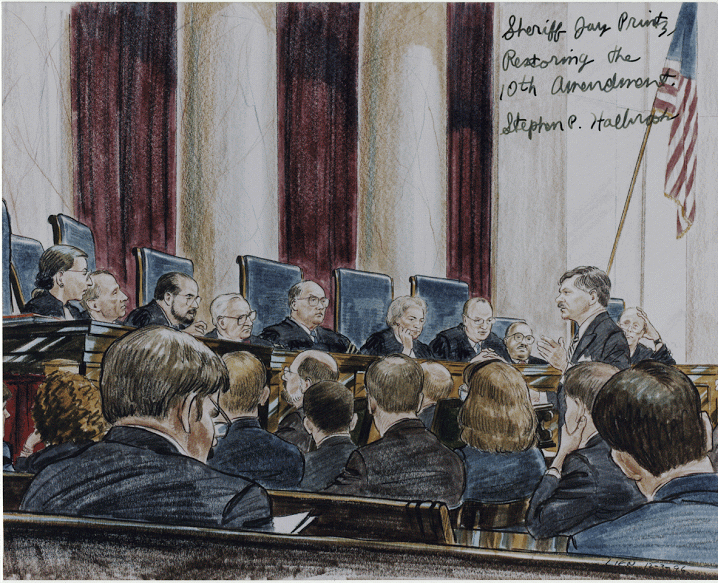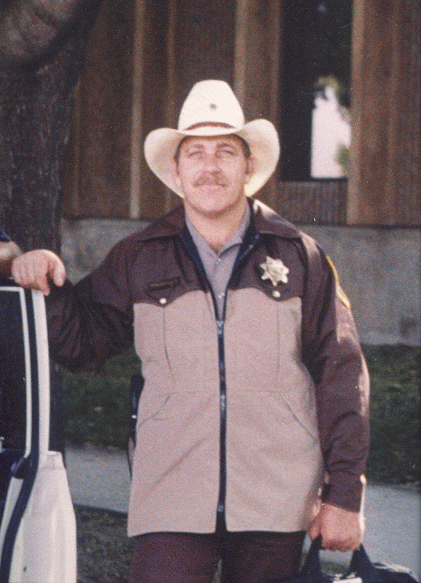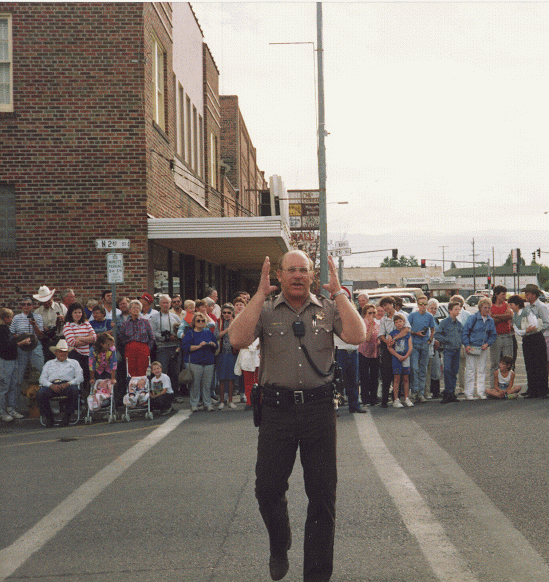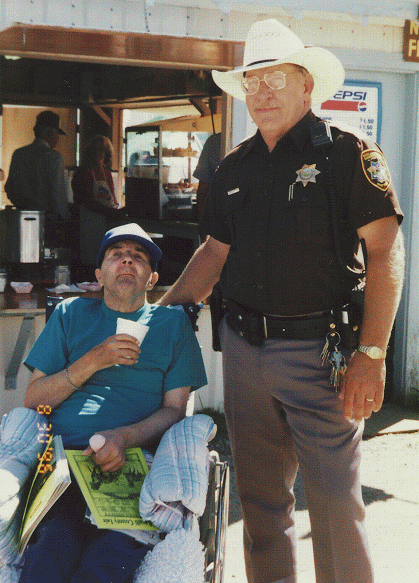President Trump’s primetime announcement of Judge Gorsuch as the replacement for Justice Scalia had all the build-up and hype of a reality show special. But the event itself was quite routine. In this post, I’d like to walk through the remarks of both President Trump and Judge Gorsuch, and offer some observations.
First, Trump noted that his selection process was the “most transparent” ever:
This may be the most transparent judicial selection process in history. Months ago as a candidate, I publicly presented a list of brilliant and accomplished people to the American electorate and pledged to make my choice from among that list.
He’s right. As I note in a forthcoming piece in the NYU Journal of Law & Liberty, titled SCOTUS after Scalia, Trump has set a new precedent for releasing short lists in advance. This allows everyone to vet every candidate with adequate time, and there can be no surprises. During an interview on last night, Leonard Leo revealed that it was Trump’s idea to create the list. I’m not sure if that had been reported before. But this was a wise move.
Second, Trump acknowledged that many people who voted for him, did so because of the Supreme Court:
Millions of voters said this was the single most important issue to them when they voted for me for president . . . I have always felt that after the defense of our nation, the most important decision a president of the United States can make is the appointment of a Supreme Court justice.
This is a remarkable notion: that one of the most important things a President can do is to appoint a judge. Perhaps only national defense takes precedent. But this is a fact of our life.
Third, Trump stated the obvious: at 49 years old, Gorsuch can serve for potentially 40 years, or more.
Depending on their age, a justice can be active for 50 years and his or her decisions can last a century or more and can often be permanent.
I discuss the actuarial life-spans here. Justice Gorsuch may be with us until 2047!
Fourth, Trump gave a very kind greeting to Maureen Scalia, who was in attendance.
Also with us tonight is Maureen Scalia, a woman loved by her husband and deeply respected by all. I am so happy she’s with us. Where is Maureen? Please, stand up. Thank you, Maureen.
On the stump, the candidate recalled that Maureen had a “Trump” yard sign.
There is a deliberate effort to tie Scalia and Gorsuch, including this photo, released shortly after the nomination, which has been atop the Drudge Report all day.
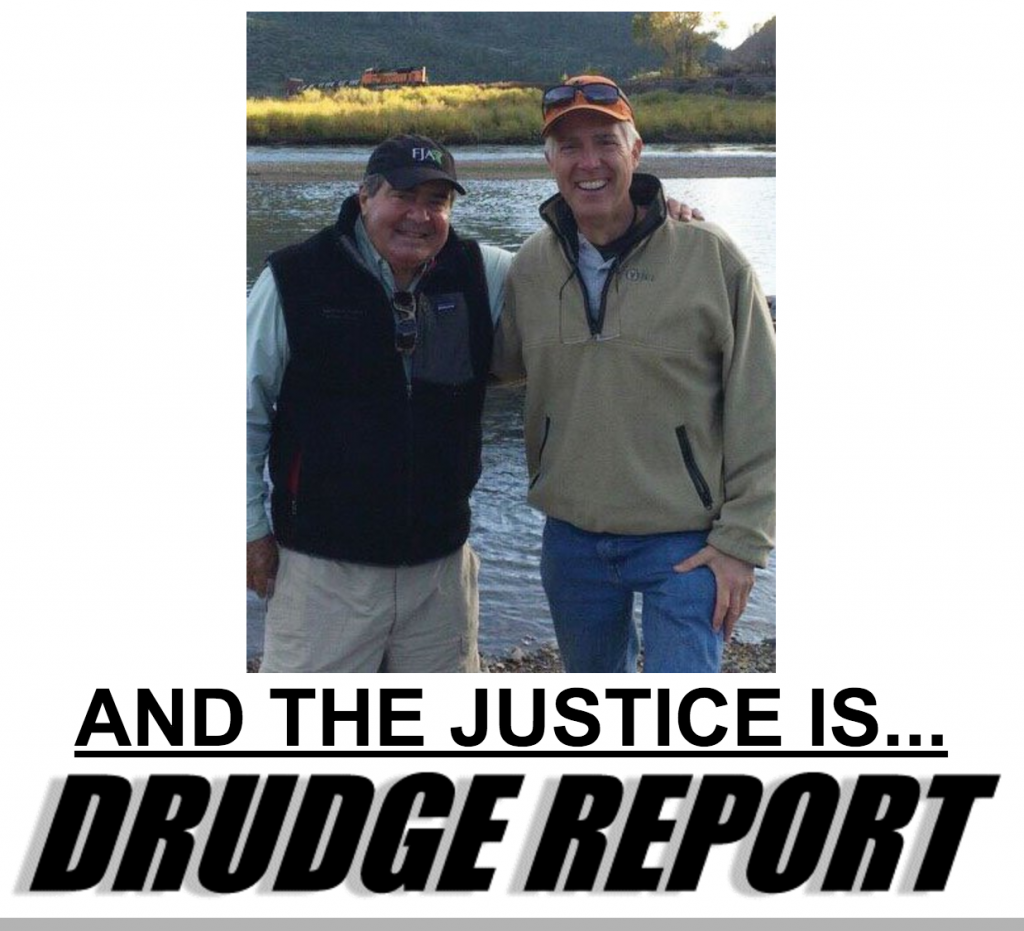
Judge Gorsuch’s remarks were like his opinions: poignant, pithy, poetic, and powerful. He began:
Standing here in a house of history, and acutely aware of my own imperfections, I pledge that if I am confirmed I will do all my powers permit to be a faithful servant of the Constitution and laws of this great country.
What prose!
First, Judge Gorsuch used the judicial oath to explain his role to the Constitution, and to all people–rich and poor.
I’ve watched them fearlessly tending to the rule of law, enforcing the promises of our Constitution and living out daily their judicial oaths to administer justice equally to rich and poor alike, following the law as they find it and without respect to their personal political beliefs. I think of them tonight.
The current statutory oath provides:
“Each justice or judge of the United States shall take the following oath or affirmation before performing the duties of his office: “I, ___ ___, do solemnly swear (or affirm) that I will administer justice without respect to persons, and do equal right to the poor and to the rich, and that I will faithfully and impartially discharge and perform all the duties incumbent upon me as ___ under the Constitution and laws of the United States. So help me God.” 28 U.S.C. § 453.
The oath, which has been recited by judges for other two centuries, appears in (of all places) Marbury v. Madison. As Chief Justice Marshall explained, it forms part of the basis of the judicial power to set aside unconstitutional statutes:
The oath of office, too, imposed by the Legislature, is completely demonstrative of the legislative opinion on this subject. It is in these words:
I do solemnly swear that I will administer justice without respect to persons, and do equal right to the poor and to the rich; and that I will faithfully and impartially discharge all the duties incumbent on me as according to the best of my abilities and understanding, agreeably to the Constitution and laws of the United States.
Why does a judge swear to discharge his duties agreeably to the Constitution of the United States if that Constitution forms no rule for his government?
For more on the judicial oath, see Richard Re’s cool new paper. During his confirmation hearing, John Roberts used this oath to stun a flat-flooted Senator Dick Durbin. Re writes:
During the confirmation hearings for then-Judge John Roberts, Senator Richard Durbin asked about economic equality. “Would you at least concede,” Durbin asked, “that you would take into consideration that in our system of justice the race goes to the swift, and the swift are those with the resources, the money, the lawyers, the power in the system?”2 “Absolutely,” Roberts replied. After all, “the judicial oath talks about doing justice without regard to persons, to rich and to poor.”3 So it’s “critically important,” Roberts continued, “to appreciate that there are going to be interests who, for one reason or another, don’t have the same resources as people on the other side.”4
There’s a reason John Roberts earned the reputation he did as an advocate. I fully expect Judge Gorsuch to run similar rings around the Democratic members of the Judiciary Committee, a surprisingly-few who are actually lawyers. Their staffers can perhaps give them the first question, but for the follow-up they won’t lay a glove on the silver fox.
Second, he refers to our great Constitution as the “greatest charter of human liberty the world has ever known.”
Of course, the Supreme Court’s work is vital not just to a region of the country, but to the whole, vital to the protection of the people’s liberties under law and to the continuity of our Constitution, the greatest charter of human liberty the world has ever known.
Third, he payed homage to the seat he is filling, formerly occupied by Antonin Scalia and Robert Jackson.
The towering judges that have served in this particular seat of the Supreme Court, including Antonin Scalia and Robert Jackson, are much in my mind at this moment.
Who held it in between those giants? Jackson’s law clerk, William Rehnquist, and before him John Marshall Harlan II. Little known fact, but in the dining room, the Justices sit not in their order of seniority, but in the seat assigned to their predecessor. Quirky tradition. On that note, Justice Kagan will soon be relieved of answering the door at conference, and cafeteria duty.
Fourth, Gorsuch paid tribute to the Judges he clerked for: Judge Sentelle, Justice White, and (perhaps most importantly) Justice Kennedy:
He was one of the smartest and most courageous men I’ve ever known. When Justice White retired, he gave me the chance to work for Justice Kennedy, as well. Justice Kennedy was incredibly welcoming and gracious, and like Justice White, he taught me so much. I am forever grateful. And if you’ve ever met Judge David Sentelle, you’ll know just how lucky I was to land a clerkship with him right out of school. Thank you. These judges brought me up in the law. Truly, I would not be here without them. Today is as much their day as it is mine.
Once confirmed, this will be the first time where a Justice and his former boss served together. (It almost happened when Judge Roberts was nominated to replace Justice O’Connor, but after the death of his former boss William Rehnquist, President Bush elevated JGR to the Chief seat). And as I noted in Politico, perhaps Judge Gorsuch can help nudge AMK to the right a bit to counteract the influence of EK.
Fifth, Judge Gorsuch made an important point about the difference between a good judge, and a bad jduge.
I respect, too, the fact that in our legal order it is for Congress and not the courts to write new laws. It is the role of judges to apply, not alter, the work of the people’s representatives. A judge who likes every outcome he reaches is very likely a bad judge stretching for results he prefers rather than those the law demands.
Recently, Justice Sotomayor made a similar point at Arizona State.
Supreme Court Justice Sonia Sotomayor said the confirmation process for high-court nominees is essentially useless because the public wants to know how a candidate would rule — something she told a crowd at Arizona State University that no good judge would predict.
“What you want is for us to tell you how as a judicial nominee we’re going to rule on the important issues you find vexing,” she told the audience at ASU Gammage on Monday night.
“Any self-respecting judge who comes in with an agenda that would permit that judge to tell you how they will vote is the kind of person you don’t want as a judge,” she said.
Indeed, a judge who only reaches results that he or she agrees with is a bad judge. At Gorsuch’s confirmation, and all future confirmation hearings, Senators should ask judges a critical question:
Please tell us about a (constitutional) case where you ruled in a way you disagree with as a matter of policy. That is, a case where you cast a vote as a judge one way, but if you were a legislator, or member of a constitutional convention, you would have voted the opposite direction. How did you come to that difficult conclusion?
In Lawrence v. Texas, Justice Thomas made this exact point:
I write separately to note that the law before the Court today “is … uncommonly silly.” Griswold v. Connecticut, 381 U.S. 479, 527 (1965) (Stewart, J., dissenting). If I were a member of the Texas Legislature, I would vote to repeal it. Punishing someone for expressing his sexual preference through noncommercial consensual conduct with another adult does not appear to be a worthy way to expend valuable law enforcement resources.
Notwithstanding this, I recognize that as a member of this Court I am not empowered to help petitioners and others similarly situated. My duty, rather, is to “decide cases ‘agreeably to the Constitution and laws of the United States.’ ” Id., at 530. And, just like Justice Stewart, I “can find [neither in the Bill of Rights nor any other part of the Constitution a] general right of privacy,” ibid., or as the Court terms it today, the “liberty of the person both in its spatial and more transcendent dimensions,” ante, at 1.
Justice Scalia would famously hold up his vote in Texas v. Johnson–overturning a conviction for flag burning–where he reached a result he a result he certainly disagreed with as a matter of policy. As retold in The New Yorker:
Scalia tends to lampoon his enemies. A “ ‘living-Constitution’ judge,” he explained, is a “happy fellow who comes home at night to his wife and says, ‘The Constitution means exactly what I think it ought to mean!’ “ By contrast, Scalia said, he was sometimes forced by the rigors of originalist methodology to make decisions that lead to consequences he finds repugnant. He noted that in 1989 he voted to strike down the conviction of a man who had burned the American flag, on the ground that the First Amendment protected such symbolic acts. “Scalia did not like to vote that way,” he said, slipping into the third person, as he often does during comic riffs. “He does not like sandal-wearing bearded weirdos who go around burning flags. He is a very conservative fellow.” Although originalists are not supposed to care about the outcome, an originalist’s wife, evidently, might sometimes consider this a crock. Scalia went on, “I came down to breakfast the next morning, and my wife—she’s a very conservative woman—she was scrambling eggs and humming ‘It’s a Grand Old Flag.’ That’s a true story. I don’t need that! A living-Constitution judge never has to suffer that way.”
All of the Justices, and Justices-to-be, should be able to answer this question.
Sixth, in a comment that did not escape my attention, he thanked his “faith.” Though he has ruled on religious liberty in the context of Hobby Lobby, there have not been any abortion cases that crossed his docket.
I am so thankful tonight for my family, my friends and my faith. These are the things that keep me grounded at life’s peaks and have sustained me in its valleys.
To Louise, my incredible wife and companion of 20 years, my cherished daughters who are watching on TV, and all my family and friends, I cannot thank you enough for your love and for your prayers. I could not attempt this without you.
Fittingly, after the nomination was made, Father Scalia led everyone in a prayer.
Despite all the drama, it was a flawlessly-executed event.
Update: Justice Ginsburg, in recent remarks at Stanford, explained an instance where she ruled in a way she disagreed with: the death penalty.
Update: Justice O’Connor offered a similar admission in her dissent in Gonzales v. Raich:
If I were a California citizen, I would not have voted for the medical marijuana ballot initiative; if I were a California legislator I would not have supported the Compassionate Use Act. But whatever the wisdom of California’s experiment with medical marijuana, the federalism principles that have driven our Commerce Clause cases require that room for experiment be protected in this case. For these reasons I dissent.
